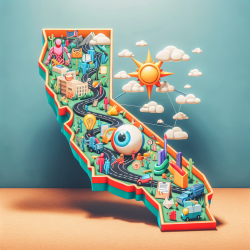In an effort to provide equitable educational opportunities for all students, California has introduced an "alternative diploma pathway" for students with disabilities, as detailed in the California Education Code (EC) Section 51225.31. This pathway, established through Assembly Bill (AB) 181 and subsequently amended, represents a significant advancement in special education, ensuring that students who qualify have access to a meaningful high school diploma.
Overview of the Alternative Diploma Pathway
The alternative diploma pathway is designed for students with exceptional needs who satisfy specific eligibility criteria. This includes students who are eligible to take the California Alternate Assessment and are required to complete state standards-aligned coursework to meet statewide course requirements. Local educational agencies (LEAs) are mandated to exempt these students from additional local coursework and requirements, focusing instead on the completion of statewide standards.
One of the key features of this pathway is that it does not alter an LEA's obligation to provide a free appropriate public education (FAPE) until the student reaches twenty-two years of age, ensuring continued support and educational opportunities beyond the awarding of the diploma.
Eligibility and Implementation
Students who entered ninth grade in the 2022–23 school year or later are eligible for this pathway, provided their individualized education program (IEP) team deems them suitable. The pathway requires the completion of state standards-aligned coursework, reflecting a commitment to maintaining rigorous educational standards for all students.
Qualifying students are entitled to participate in graduation ceremonies and related activities alongside their peers, reinforcing the inclusive spirit of this legislation. This participation does not signify the termination of FAPE, consistent with federal regulations.
FAQs and Clarifications
- Resources: The California Department of Education (CDE) offers resources on the California Alternate Assessment and state standards-aligned curriculum to aid in the implementation of this diploma pathway.
- Diploma Issuance: LEAs are authorized to issue diplomas under this pathway starting from the 2023–24 academic year for students who meet the eligibility criteria.
- Impact on Graduation Rates: Diplomas earned through this pathway count towards an LEA's graduation rate on the California School Dashboard, promoting accountability and transparency.
- Continuation of Services: Receipt of this diploma does not terminate an LEA's obligation to provide FAPE, ensuring ongoing support for students with disabilities.
- Diploma vs. Certificate of Completion: This pathway results in the awarding of a high school diploma, not a Certificate of Completion, offering students recognized academic credentials.
- IDEA Compliance: The diploma awarded through this pathway is considered a "state-defined alternate diploma" and does not meet the definition of a regular high school diploma under the Individuals with Disabilities Education Act (IDEA). However, it does not relieve an LEA from its obligation to provide FAPE.
Implications for Special Education
The introduction of the alternative diploma pathway is a milestone in special education, acknowledging the diverse needs and capabilities of students with disabilities. By providing a clear route to graduation that respects the individual educational requirements of these students, California is setting a precedent for inclusivity and equity in education.
For LEAs, this pathway necessitates a comprehensive understanding of the new requirements and a commitment to ensuring that all eligible students have the opportunity to benefit. It underscores the importance of IEP teams and the role they play in assessing student eligibility and guiding them through the process.
Furthermore, this pathway highlights the ongoing responsibility of LEAs to provide FAPE, reinforcing the idea that graduation is but one milestone in a student's educational journey. For students with disabilities, continued access to educational resources, support, and services remains crucial for their development and success beyond high school.
Conclusion
The alternative diploma pathway for students with disabilities in California represents a significant step forward in making education accessible and meaningful for all students. By recognizing the unique needs of students with disabilities and providing a pathway to graduation that honors those needs, California is ensuring that all students have the opportunity to succeed and thrive.
As educators, administrators, and advocates, it is our responsibility to support the implementation of this pathway, ensuring that students with disabilities are afforded the recognition and opportunities they deserve. Through collaboration, dedication, and a commitment to inclusivity, we can make a difference in the lives of these students and the broader educational landscape.
For more information on the alternative diploma pathway and its implications for special education in California, please follow this link.










